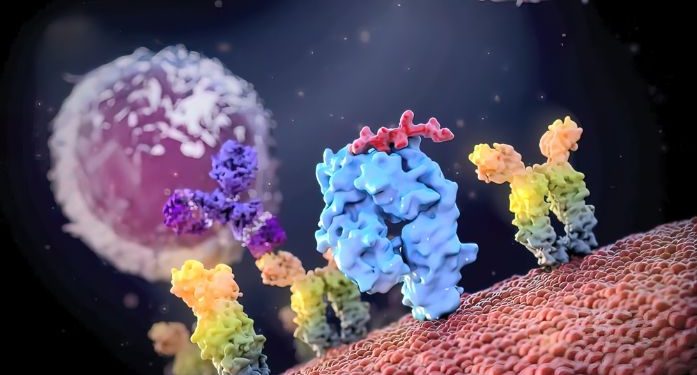Kaposi sarcoma is a type of tumour that develops on blood vessels and other soft tissue. It most commonly affects the skin, but it can also appear in other parts of the body. It was one of the main causes of death in people with HIV in the early days of the AIDS epidemic, but since then it has been treated and the incidence has fallen dramatically. Currently, the disease is not usually life-threatening, and the discoloured patches that give the condition its name often shrink and fade away with treatment.
There are several types of kaposi sarcoma, and the symptoms vary depending on which organs are affected. They may appear all over the body in the form of coloured spots (lesions), or they may develop inside internal organs like the lungs, stomach and bowel.
The most common symptom of kaposi sarcoma is red or purple scaly lesions on the skin. They are often lumpy, but can be smooth or bumpy. They are not itchy, and they do not drain or ooze. They can be found anywhere on the body, but they are more likely to appear on the legs, arms, face or groin. They can be found in different colours, but they tend to be pink, brown or reddish purple on light skin tones and blueish or black on dark skin tones. The lesions are sometimes very large, and they can spread quickly.

Lesions can also appear in other areas of the body, such as the mucous membranes that line the mouth, nose and anus or the lining of internal organs like the liver, stomach and lungs. When they do, the symptoms can include coughing up blood, difficulty breathing or a blocked bowel. Other symptoms can be a low red blood cell count or pain in the belly.
Kaposi sarcoma is caused by an infection with a herpesvirus called human herpesvirus 8 (HHV-8). In healthy people, the HHV-8 virus is not harmful and there are no symptoms, but in patients who have weakened immune systems it can cause a number of problems, including KS.
If you have a symptom of KS, or the characteristic coloured patches on your skin, talk to your GP. They can refer you to a specialist if needed.
Your doctor can diagnose kaposi sarcoma by taking a biopsy of a lesion. During the biopsy, they will remove small pieces of tissue and send them to a laboratory for testing. They will also take a chest X-ray, as KS can spread to the lungs and cause breathing difficulties. Other tests may be needed if the KS is affecting your digestive tract, such as a colonoscopy or endoscopy. Alternatively, blood tests can be used to check your red blood cells and other vital signs. If you have a strong family history of cancer, your doctor may want to perform additional tests before starting treatment to check for any genetic mutations that could increase the risk of developing the condition.









